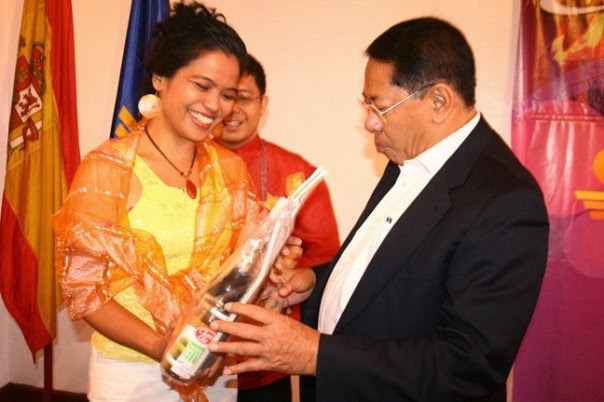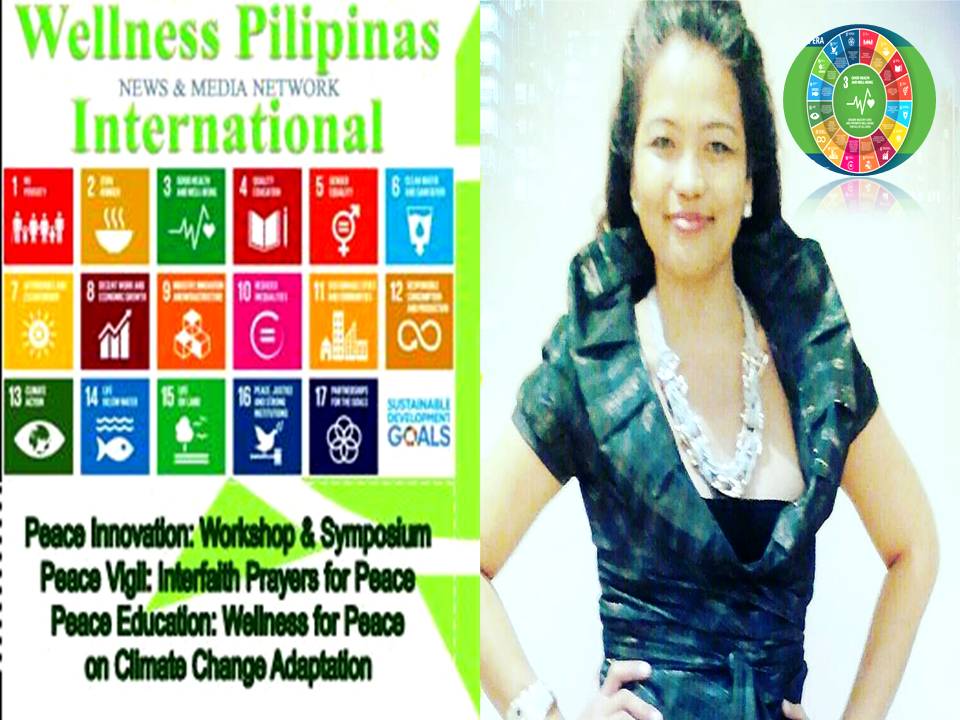"Quitline is a phone and mobile-centered support service under the Stop Smoke Program of the Department of Health (DOH) and the World Health Organization (WHO).
Those who want to join the program can register through their mobile phones by texting “STOPSMOKE” to 09290165364.
They will receive a computer-generated instruction which they need to follow and answer a few questions
After completing the registration, the sender will receive a daily text message from Quitline.
Another way to join the program is by calling 165-364.
A quitter can talk to an operator from the Lung Center who will advise him or her on how to quit smoking.
DOH Sec. Paulyn Ubial said, “This particular strategy has long been proven in other countries so we are evidence based in terms of how we moved the tobacco agenda forward off course it is more successful if it is done in conglomeration with other strategies.”
DOH says, the Quitline will greatly help lessen the number of smokers in the country.
Based on data, 30% of Filipinos quit smoking in 2009, and the figure declined by 6% in 2015.
That 6% is translated to more than 1 million cigarette smokers in the country.
Quitline is free and is operational 24/7.
“Our face to face counseling and services are free in government hospitals, we now have a network in all NCR and hopefully Lung Center will start training other LGU’s as well as DOH hospitals,” Ubial added.
Emer Rojas has quit smoking a few years ago. He admits it is not easy to quit smoking.
But with free services that the government provides, it will now be easier for smokers to quit.
“The success rate of quitters is low but it is much better because we have Quitline, this will help Filipinos quit smoking,” New Vois Association Pres. Emer Rojas said.
The Health Department is aiming to lower the percentage of cigarette smokers in the country by 15% in 2022. – Mon Jocson | UNTV News and Rescue
The post DOH opens “Quit Line” for Filipinos who wish to stop smoking appeared first on UNTV News."
'via Blog this'
What is Wellness Pilipinas?
The Philippines' response to the call of World Health Organization (WHO) in 2009 to lessen the augment of Lifestyle Diseases of stroke, cancer, diabetes, etc, and the country's compliance to United Nations Climate Change Peace Building Campaign in 2007. Wellness Pilipinas! was conceived by "Wellness for Peace" Author, Public Speaker & former Peace Ambassador Zara Jane Juan. It consists of pep talks, workshops, symposiums & fora meant to achieve wellness in mind, body, spirit & economics as tools for peace & nation-building. Wellness Pilipinas aired as a live TV show at GNN via G-SAT Asia from 2009-2010 supported by private and public corporations
Translate
Tuesday, June 20, 2017
Friday, June 2, 2017
WHO | World No Tobacco Day 2017: Beating tobacco for health, prosperity, the environment and national development
GENEVA - Action to stamp out tobacco use can help countries prevent millions of people falling ill and dying from tobacco-related disease, combat poverty and, according to a first-ever WHO report, reduce large-scale environmental degradation.
On World No Tobacco Day 2017, WHO is highlighting how tobacco threatens the development of nations worldwide, and is calling on governments to implement strong tobacco control measures. These include banning marketing and advertising of tobacco, promoting plain packaging of tobacco products, raising excise taxes, and making indoor public places and workplaces smoke-free.
Tobacco’s health and economic costs
Tobacco use kills more than 7 million people every year and costs households and governments over US$ 1.4 trillion through healthcare expenditure and lost productivity.
"Tobacco threatens us all," says WHO Director-General Dr Margaret Chan. "Tobacco exacerbates poverty, reduces economic productivity, contributes to poor household food choices, and pollutes indoor air."
Dr Chan adds: "But by taking robust tobacco control measures, governments can safeguard their countries' futures by protecting tobacco users and non-users from these deadly products, generating revenues to fund health and other social services, and saving their environments from the ravages tobacco causes."
All countries have committed to the 2030 Agenda for Sustainable Development, which aims to strengthen universal peace and eradicate poverty. Key elements of this agenda include implementing the WHO Framework Convention on Tobacco Control, and by 2030 reducing by one third premature death from noncommunicable diseases (NCDs), including heart and lung diseases, cancer, and diabetes, for which tobacco use is a key risk factor.
Tobacco scars the environment
The first-ever WHO report, Tobacco and its environmental impact: an overview, also shows the impact of this product on nature, including:
Tobacco waste contains over 7000 toxic chemicals that poison the environment, including human carcinogens.
Tobacco smoke emissions contribute thousands of tons of human carcinogens, toxicants, and greenhouse gases to the environment. And tobacco waste is the largest type of litter by count globally.
Up to 10 billion of the 15 billion cigarettes sold daily are disposed in the environment.
Cigarette butts account for 30–40% of all items collected in coastal and urban clean-ups.
Tobacco threatens women, children, and livelihoods
Tobacco threatens all people, and national and regional development, in many ways, including:
Poverty: Around 860 million adult smokers live in low- and middle-income countries. Many studies have shown that in the poorest households, spending on tobacco products often represents more than 10% of total household expenditure – meaning less money for food, education and healthcare.
Children and education: Tobacco farming stops children attending school. 10%–14% of children from tobacco-growing families miss class because of working in tobacco fields.
Women: 60%–70% of tobacco farm workers are women, putting them in close contact with often hazardous chemicals.
Health: Tobacco contributes to 16% of all noncommunicable diseases (NCDs) deaths."
'via Blog this' SOURCE: WHO | World No Tobacco Day 2017: Beating tobacco for health, prosperity, the environment and national development: "
On World No Tobacco Day 2017, WHO is highlighting how tobacco threatens the development of nations worldwide, and is calling on governments to implement strong tobacco control measures. These include banning marketing and advertising of tobacco, promoting plain packaging of tobacco products, raising excise taxes, and making indoor public places and workplaces smoke-free.
Tobacco’s health and economic costs
Tobacco use kills more than 7 million people every year and costs households and governments over US$ 1.4 trillion through healthcare expenditure and lost productivity.
"Tobacco threatens us all," says WHO Director-General Dr Margaret Chan. "Tobacco exacerbates poverty, reduces economic productivity, contributes to poor household food choices, and pollutes indoor air."
Dr Chan adds: "But by taking robust tobacco control measures, governments can safeguard their countries' futures by protecting tobacco users and non-users from these deadly products, generating revenues to fund health and other social services, and saving their environments from the ravages tobacco causes."
All countries have committed to the 2030 Agenda for Sustainable Development, which aims to strengthen universal peace and eradicate poverty. Key elements of this agenda include implementing the WHO Framework Convention on Tobacco Control, and by 2030 reducing by one third premature death from noncommunicable diseases (NCDs), including heart and lung diseases, cancer, and diabetes, for which tobacco use is a key risk factor.
Tobacco scars the environment
The first-ever WHO report, Tobacco and its environmental impact: an overview, also shows the impact of this product on nature, including:
Tobacco waste contains over 7000 toxic chemicals that poison the environment, including human carcinogens.
Tobacco smoke emissions contribute thousands of tons of human carcinogens, toxicants, and greenhouse gases to the environment. And tobacco waste is the largest type of litter by count globally.
Up to 10 billion of the 15 billion cigarettes sold daily are disposed in the environment.
Cigarette butts account for 30–40% of all items collected in coastal and urban clean-ups.
Tobacco threatens women, children, and livelihoods
Tobacco threatens all people, and national and regional development, in many ways, including:
Poverty: Around 860 million adult smokers live in low- and middle-income countries. Many studies have shown that in the poorest households, spending on tobacco products often represents more than 10% of total household expenditure – meaning less money for food, education and healthcare.
Children and education: Tobacco farming stops children attending school. 10%–14% of children from tobacco-growing families miss class because of working in tobacco fields.
Women: 60%–70% of tobacco farm workers are women, putting them in close contact with often hazardous chemicals.
Health: Tobacco contributes to 16% of all noncommunicable diseases (NCDs) deaths."
'via Blog this' SOURCE: WHO | World No Tobacco Day 2017: Beating tobacco for health, prosperity, the environment and national development: "
WHO: World No Tobacco Day 2017
| |||||||||||||||||||||||
| |||||||||||||||||||||||
|
Subscribe to:
Posts (Atom)
#ASEAN2017:
Presidential Communications Operations Office – Committee on Media Affairs and Strategic Communications (PCOO – CMASC) in partnership w/ Asia Society Philippines & Asian Institute of Management (AIM) hosted the ASEAN 2017 Dialogues held 11 July 2017 at AIM, Makati, Philippines. Attending the dialogue is Amb.Zara Jane Juan, Convener , Climate Change Peace Building for United Nations Sustainable Development Goals (UNDSG) of sailing for peace United Nation's International Day of Peace Vigil MALUSOG ANG PINOY! United Nations Friends Photo Credit: Aloy Menez
Senator Angara with Ambassador Zara Jane Juan

@NCCA



